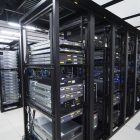
Continued from Part 1:
Actually, you’ve had experience with something like this when you’ve used a computer; in fact you are experiencing it right now!
When you use a software program on your computer, the operating system “virtualizes” its ability to access the computer hardware; so that only the program you are using has access to it; your program is able to manipulate the files it accesses, write data and images to the screen, etc.. This example is a bit oversimplified of how operating systems work, but the concept is: The operating system takes care of controlling how programs access or utilize hardware so that each application can work without needing to manage the hardware or its capabilities. The operating system encapsulates the hardware, allowing multiple applications to use it at the same time.
The most common type of virtualization is server virtualization. Think of server virtualization as adding another layer of encapsulation that allows multiple operating systems to operate on a single piece of hardware.
In this technology, each operating system believes it has sole control of the server hardware, but in reality, the virtualization software controls access and availability to it in such a way that a number of operating systems can work simultaneously without affecting or crashing into one another.
The genius of virtualization is that it provides new capability without imposing the need for significant product or process change.
Virtualization is actually a simple concept that is made complex by all the exceptions that can arise in particular circumstances. It can be frustrating having to deal with what seem to be insignificant detail, but unfortunately that’s the reality of virtualization. Remember, you are moving multiple operating systems and applications onto a new, single piece of software called a hypervisor, which in turn talks to and manages the integration and utilization of the underlying hardware, and this seems to be a very complex process, as it should be.
If you have learned nothing more from this series than the fact that virtualization enables you to share a hardware resource among a number of other software systems, then the next series topic, what’s making virtualization the hot topic now, will be all that much easier to get through.





